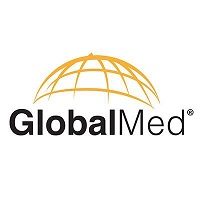 By Stephen Joseph, GlobalMed
By Stephen Joseph, GlobalMed
Twitter: @GlobalMed_USA
Telemedicine is medical information that’s shared electronically to improve the health of the patient. It could include a variety of applications such as mobile apps, video conferencing software, wireless devices, email, and other forms of communication. Patients may consult with their healthcare providers video conferencing, images, electronic patient portals, and remote monitoring. Here are the most common uses of telemedicine today.
Video Conferencing
Video conferencing is sometimes referred to as synchronous video. This type of video conferencing takes place in real-time between a patient and a healthcare provider. This type of geriatric telemedicine uses video conferencing software such as Google Hangouts, Skype, or Zoom. This type of telemedicine is popular for primary care, follow-up visits, prescription management, chronic illness assessments, and psychotherapy sessions. This type of technology is already being used in senior homes and assisted living facilities.
Remote Patient Monitoring
Remote patient monitoring (RPM) has become another popular form of telemedicine for telehealth and older adults. This involves collecting medical data directly from the patient or tracks a patient’s vital signs from a distance. The data is then relayed to a nurse, physician, or caregiver for monitoring purposes. Remote patient monitoring is necessary for high-risk patients such as those with a history of stroke or heart disease. It’s even used to monitor patients who suffered a fall or have been released from the hospital.
Remote patient monitoring is also ideal for assessing and treating a multitude of chronic health conditions. It can be used to educate diabetes patients to track their glucose levels and send the information to their physician. Elderly patients who live alone or in assisted living facilities may also be closely monitored as well.
Asynchronous Video
An asynchronous video is different from synchronous video as it provides a patient’s recorded health history through the electronic communications system. This allows the healthcare provider to properly diagnose or treat patients outside of the office, at a time and place that’s convenient for them. It promotes telehealth and seniors in settings such as nursing homes and assisted living facilities. This type of telemedicine is often used among physicians, nurse care practitioners, radiologists, and specialists in a particular location.
Mobile Health Services
Mobile health uses smartphones, tablets, and other wireless services that provide healthcare to telehealth and the aging population. Examples of mobile health services include electronic health records, software applications, and healthcare apps. They are especially valuable in communicating with patients about preventative health care services. Mobile health services can also be used to manage chronic health problems, prevent epidemic outbreaks, and the surveillance and treatment of most health problems.
Getting a Second Opinion Online
Second Opinion Telemedicine Solutions makes it easier for patients to get a second opinion without the need to visit another physician’s office. It includes the use of interactive video conferencing and software medication to get access to data about the patient. The physician can also check vital signs thanks to HD medical video scopes and electronic stethoscopes that connect to the system. All of the patient’s healthcare information is stored safely in an online portal that gives remote healthcare providers safe access to this information.
Telehealth Clinics
Telehealth clinics are quickly becoming popular in rural areas of the United States. Schools may use telehealth clinics to give children access to primary care services. These school-based telemedicine programs consist of pediatricians and nurse care practitioners who treat and care for these young patients. They may also oversee the health and well-being for all of their students. Telehealth clinics are now focusing on telemedicine and older patients who live on their own or in senior residential areas.
As mobile devices and wireless technology increase in popularity, telemedicine will continue to advance. The future of the healthcare industry is to treat and monitor patients through mobile devices and video conferencing software.
This article was originally published on GlobalMed and is republished here with permission.
